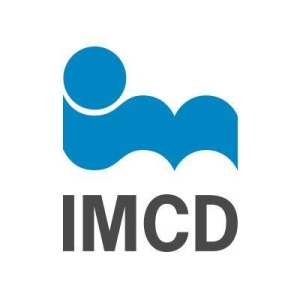Exceeding Expectations

Being Nimble - The distribution sector did not make it through the economic downturn unscathed; however, companies with broad product portfolios, such as the IMCD Group, were able to weather the storm relatively well. Brandi Schuster asked Stan Bijsterveld, the company's European supply chain manager, about how his company has dealt with outside circumstances and the importance of flexibility in chemical distribution.
CHEManager Europe: How has the European logistics market evolved over the last years?
S.Bijsterveld: Much of the increase in business efficiency over the past 10 years can be attributed to technological applications such as bar coding; RFID; computerized inventory systems; electronic data exchange; Internet ordering; and the exchange of forecasting information. These technologies have made it possible to link business units within a single organization. The potential of such technologies is enormous but so are the challenges involved in seamlessly integrating across organizations.
What do you currently consider to be the most pressing issues within the industry?
S.Bijsterveld: Customers are holding less inventory and therefore demand shorter lead times from their suppliers/distributors. Inventory placement and next day delivery service have therefore become an even greater focus for IMCD. This demand puts the pressure on transport operators. There has been a dramatic increase in the presence of relatively low cost Eastern European operators and an increased number of vehicles are being registered in the Balkans and Poland.
Increased oil prices, reduced working hours of drivers plus the shortage of drivers, not to mention congestion, are other issues that form a pressure on the European freight market.
How has IMCD handled these pressures?
S.Bijsterveld: Besides the technical expertise our sales force offers, we live by our supply chain. We as IMCD aim for long term partnerships with our logistic service providers in order to design profitable infrastructures and constantly improve the way we source, sell and distribute products. As a specialty chemical, food and pharmaceutical distributor, the IMCD supply chain is all about distributing an ever-changing array of products and services that must reach our customers at the right time, place and price.
What affect has the worldwide recession had on the industry?
S.Bijsterveld: The prognosis for the industry will vary per segment. Companies with broad product portfolios, wide end-use segments and great geographic reach have the ability to leverage. It will be more the niche branches that face great difficulties.
What adaptations have been necessary?
S.Bijsterveld: The recession on the industry is not necessarily bad for us as distributors. In time of recession, a lot of production companies go back to the core and shift small and time consuming accounts towards distributors. Distributors then serve the fragmented markets at overall lower cost whilst placing inventories closer to the customers and absorbing and reducing credit risk as well.
How has the cost of fuel affected the way chemicals are transported?
S.Bijsterveld: The higher cost of oil did not only affect the way chemicals were transported, it was also driving up the cost of many other goods and services. It meant an uncertain future for transportation-related industries and many suffered significantly.
It is crucial, especially in such times, to have a robust supply chain infrastructure built on solid partnerships to guarantee fast and timely supply to the market. At IMCD, we saw not only the transfer price of the materials we source going up but also the cost of transport. As a distributor, we depend on road transport and saw that the shortage of drivers and the increased wages in combination with the rising fuel prices were squeezing the trucking industry that already operates with slim profit margins.
For us, the transportation mode mainly remained by road, but we did notice on both inbound and outbound legs increased shipment sizes to reduce the cost per ton.
With production locations spread out all over the world, what do you think is the best network strategy for chemical companies?
S.Bijsterveld: We serve producers from all over the world, and the choice of sales channel will be influenced by the chemical producers' strategy.
The right distribution strategy will increase their business growth. IMCD offers distribution channel management with technical expertise on the products which enable the producer to focus on a small or single number of sales channels. They invest in each one and build strong relationships with key intermediaries whilst servicing their big key accounts directly. Efficient logistics and effective communication is vital if they want to maximize their sales.
What does it mean to be flexible in terms of logistics in today's market?
S.Bijsterveld: Once a sale is made, the order fulfillment is the next challenge for the business. Customer satisfaction is our prime goal. Although we as IMCD outsource our supply chain activities, we are flexible in terms of partner selection. The partners we do select must be able to support changes in our business models, product mix, service enhancements, process eliminations and even greater process integrations as the need arises.
We notice that we are faced with much more specific customer requirements, higher customer service expectations and the pressure to reduce costs. Logistics flexibility is vital to reconcile these conflicting pressures. We achieve better flexibility by ongoing improvement in structural and system level changes and in being flexible in adopting process changes initiated by our logistic partners.
What are the most important aspects of maximizing supply chain efficiency?
S.Bijsterveld: I believe there are no immediate ways to become more efficient; it must be given serious thought and needs a good strategy. Supply chain is all about relationships between organizations, and as far as IMCD is concerned, we want to make sure any changes we make will affect our relationships positively.
The supply chain is an integral part of the IMCD business and encompasses a wide range of activities including sourcing materials and ensuring that the product and/or service is at the right place at the right time, at the right price. Cost containment has become critical, and the supply chain is one area businesses are focusing on. It's not just simply about cutting costs by 10% across the board and hoping for the best. It's about being strategic.
We have segmented customers based on service needs; we customize the logistics network; we listen to signals of market demand and plan accordingly; we differentiate, place product closer to the customer, source strategically and develop chain-wide strategies in close cooperation with our logistic partners.
How can collaboration across the supply chain help to bring costs down? What are some of the common pitfalls when it comes to collaboration?
S.Bijsterveld: In general, companies don't easily adapt to change. There is a tendency for functional relationships to be rigidly defined and for organizations to execute static plans.
The decision-making process on strategic, tactical and operational levels plays a crucial role in supply chain collaboration. Optimizing individual links within a supply chain is of limited value if these links have little or no visibility of what is happening upstream and downstream. Logistic operations cannot effectively manage workloads, meet customer service requirements and control costs without this insight.
Furthermore, process automation and collaboration between partners is generally a win-win proposition for all parties involved. But it requires the right software tools to reach its full potential. Many organizations primarily focus on the exchange of information between organizations and the synchronization of processes within the current supply chain structure. Although benefits may be realized by this exchange, it may be a sub-optimization only. The fundamental issue is whether the current supply chain structure is appropriate for the markets that the supply chain is serving.















